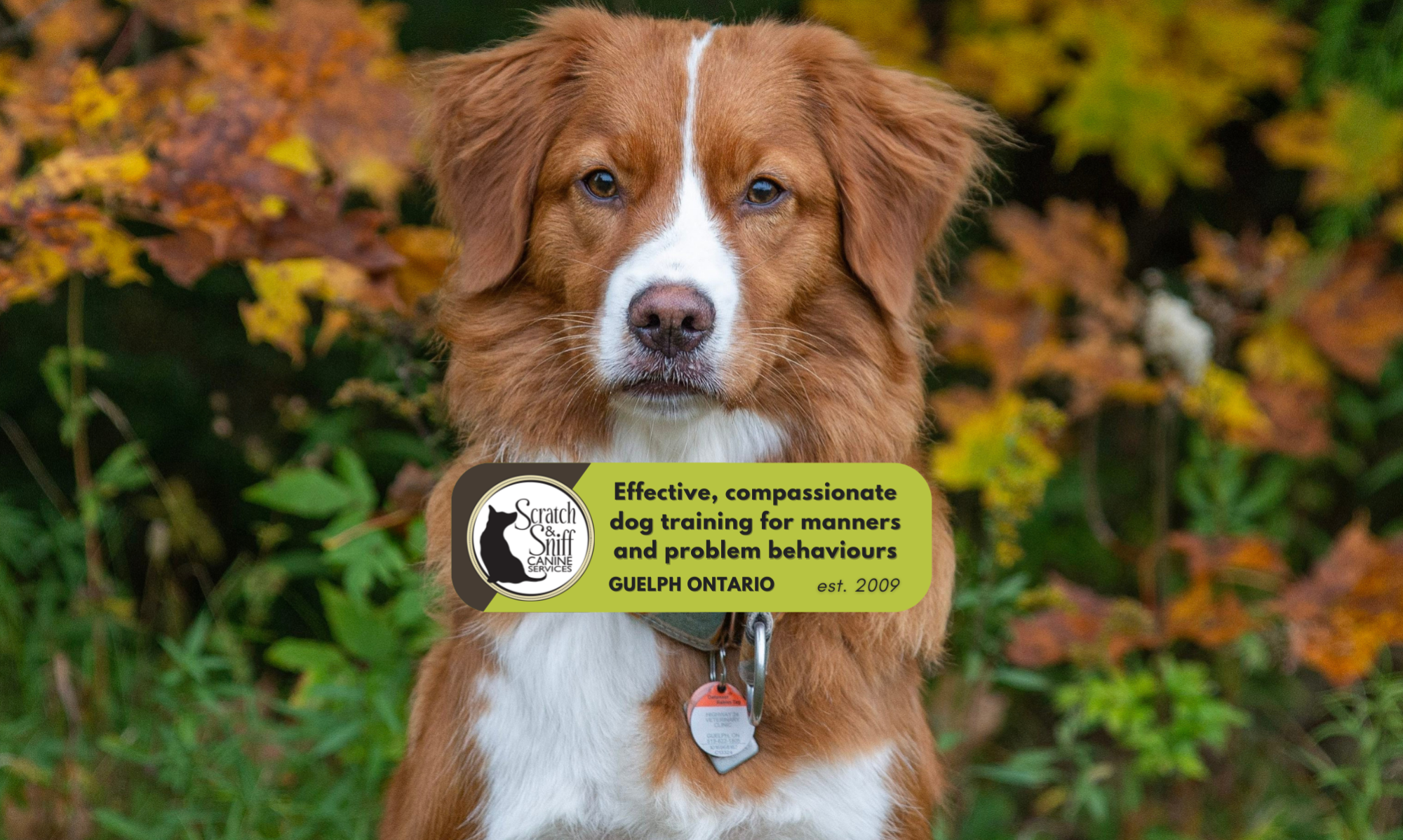As seen in the October 2017 Speaking of Dogs Newsletter.
Having multiple dogs can be a wonderful experience, but when things go wrong it can be stressful for everyone involved. Luckily, there’s a lot you can do to cultivate good relationships between dogs in a multi-dog household.
Our homes are essentially very confined spaces containing limited valuable resources, and we give our dogs no choice in housemates – this can be a perfect storm. There are a lot of arguments for allowing dogs to “work it out” or “enforce the pack hierarchy,” and these arguments have a very basic flaw, as they assume the infallibility of “The Pack.” While the myth of the pack isn’t something we’ll get into here, I’ll touch on some very practical tips and considerations for helping multiple dogs live comfortably in our homes.
The Needs of Existing Dogs
Owners often introduce a puppy into the home with an aging dog, who is perhaps past the period in life where he is interested in going to a rave and body-surfing into the mosh pit. But this may be what the new puppy wants to do, and she will drag the old guy along for the ride! For some older dogs, a puppy puts a new spring in their step and they play the very important role of auntie or uncle dog. Other older dogs become stressed and reserved or even lash out at the puppy – and the last thing a young puppy needs is a bad experience with another dog!
It is critical for an owner to understand and respect the wants and needs of the existing dogs in their home. Use barriers to give older dogs all the space they need from the puppy, and slow the integration between a new dog and an existing dog. Some existing dogs may not be elderly but are behaviourally or emotionally sensitive and need a very gradual integration of a new family member in order to prevent stress and conflict.
You may know the new dog is here to stay, but your existing dog had no say in it! When adding a new dog to the home, always take the needs of your current dogs into account. Some dogs actually prefer, or even need, to be an only dog! Finding a well-matched dog will greatly reduce the risk of conflict in the home.
Multi-dog Walks
Walks may be most easily executed one on one. Particularly with a new dog, you may find that you have a lot of training to do on walks, whether it be for basic leash skills, or for reactivity or fear that emerges as they settle into your home. Using a no-pull harness can be to your advantage if you choose to walk multiple dogs together.
Individual Training Time
Individual training time is critical for all dogs in the household. Positive training is great for cultivating a healthy relationship between you and your new dog and maintaining one with your existing dog. Take each dog to a separate area individually to practise training and teach new skills, and leave your other dog with a chew or stuffed Kong to keep them busy while they wait their turn. Individual training time becomes even more important if you find yourself working through behaviour problems such as reactivity, fear, or aggression.
Individual Play Time
Similarly, find time to play with each dog individually. Integrate play throughout your individual training sessions as well. Structured one-on-one play is a great way to teach impulse control and build a relationship with your dogs. Playing fetch with multiple dogs chasing one ball is rarely a good idea, as it can provoke resource guarding of the ball or create so much arousal in the running dogs that the excitement tips over into a fight.
Hot Spots for Conflict
Be aware of “hot spots” (or “hot times”) for problems between cohabitating dogs. As a general rule, there is potential conflict any time there is
- a desirable resource (e.g., bully sticks, food, toys, access to a person);
- limited space (e.g., narrow hallways, doorways, behind furniture, beds, and couches);
- a mismatched activity (e.g., one dog is resting and the other wants to play); or
- high arousal (e.g., on the way out the door, leashing up for a walk, getting ready for feeding time).
Mitigate potential for conflict by being conscious and watchful during these situations. Be proactive to prevent these potential trouble spots from escalating into conflict.
Separation as Prevention
Make a habit of feeding dogs in separate areas, whether it is meals, stuffed Kongs, or chews. This should be a solid rule for any new additions to the home, and it is recommended for long-term management as well. You might feed in crates, use a gate to separate the dogs, or, for small apartments, you can even feed a dog in the bathroom with the door closed.
The same recommendation applies to leaving dogs alone while you’re at work. Err on the side of caution, and leave your dogs in separate areas. Alternatively, you can crate one or both of the dogs, assuming they are comfortable with this type of confinement.
Problems typically arise long before fights break out in the home, and seeing the subtle signs can take excellent observation skills on the part of the owner. If you’re seeing obvious conflict between dogs in your home, you may be missing much of the lead up to the incidents. If you’re currently having difficulties, seek out a reputable, educated positive-reinforcement-based trainer with skills in behaviour modification to guide you.
